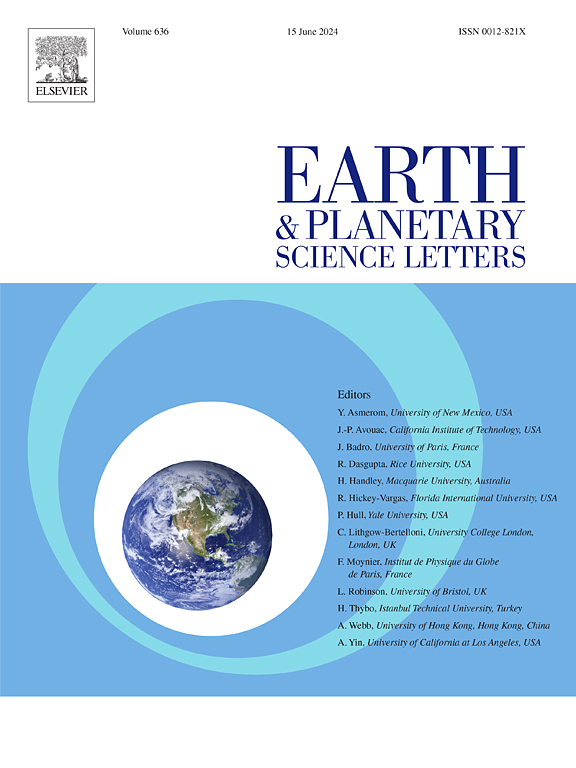A two-phase two-component slurry model of the F-layer at the base of Earth's core
IF 4.8
1区 地球科学
Q1 GEOCHEMISTRY & GEOPHYSICS
引用次数: 0
Abstract
We present a new two-phase two-component slurry model of the F-layer at the base of Earth's liquid outer core. Seismic observations indicate that the F-layer is stably stratified, which challenges conventional models of core dynamics that assume outer core convection and dynamo action are powered by heat and light element release at the inner core boundary (ICB). Previous work (Wong et al., 2021) has shown that an F-layer comprising a “snow” of solid iron particles falling through an iron-oxygen liquid can account for the inferred thickness, density and velocity anomaly of the F-layer; however, the model prescribed simplified fluid dynamical descriptions of the solid and liquid phases. Here we build on the work of Wong et al. (2021) by incorporating a self-consistent description of two-phase fluid dynamics. Analysing a suite of 1D time-independent solutions reveals that the solid fraction and liquid velocity decrease with increasing bulk oxygen concentration and buoyancy number B, while and increase with increasing ICB heat flux and solid/liquid viscosity ratio . Extrapolating to core conditions suggests that while the solid velocity is comparable to velocities at the top of the liquid core inferred from geomagnetic secular variation. Our results suggest that stable stratification in the F-layer arises from compositional variations maintained by outward barodiffusion and flux of light element that balance the inward flux of solid.
求助全文
约1分钟内获得全文
求助全文
来源期刊

Earth and Planetary Science Letters
地学-地球化学与地球物理
CiteScore
10.30
自引率
5.70%
发文量
475
审稿时长
2.8 months
期刊介绍:
Earth and Planetary Science Letters (EPSL) is a leading journal for researchers across the entire Earth and planetary sciences community. It publishes concise, exciting, high-impact articles ("Letters") of broad interest. Its focus is on physical and chemical processes, the evolution and general properties of the Earth and planets - from their deep interiors to their atmospheres. EPSL also includes a Frontiers section, featuring invited high-profile synthesis articles by leading experts on timely topics to bring cutting-edge research to the wider community.
 求助内容:
求助内容: 应助结果提醒方式:
应助结果提醒方式:


